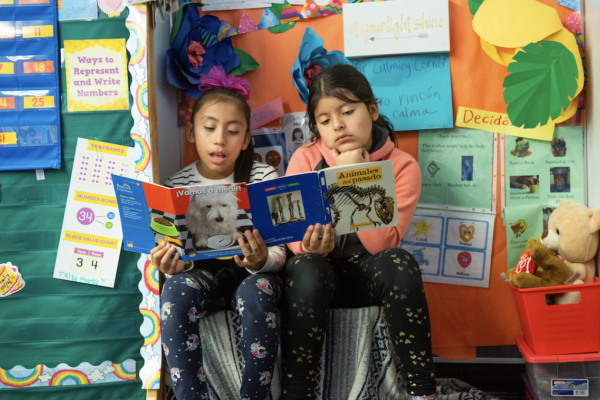With billions in federal Covid-relief aid flowing to schools, the question on everyone’s mind is how districts and charter organizations will spend the money. Federal and state governments are starting to collect spending data, but the information lags well behind reality and often lacks substantive detail.
Key sources of information right now are the spending plans that local education agencies are required to submit before using the American Rescue Plan’s Elementary and Secondary School Emergency Relief fund, otherwise known as ESSER III. This is the third and largest round of spending that Congress authorized to help public K-12 schools recover from the pandemic. It totals $122 billion over three years, including $12 billion for state education agencies and the rest for local districts and charter schools.
At FutureEd, we’ve spent the past few months analyzing these plans in a database compiled by the data services firm Burbio. Now, with some experience under our belts identifying trends in local spending priorities during this unprecedented infusion of federal money, we thought we’d share some lessons with reporters, advocates and parents trying to do their own analyses or simply learn more about their district’s spending.
Lesson 1: All plans are not equal. Depending on the state template—or lack thereof—districts provide far different levels of detail on what they intend to spend. We’ve found about 500 plans that give no dollar figures, just indications of what their investments will be. Some attach dollar amounts only for broad priorities, such as academic recovery, facilities, and technology. Others provide detailed, three-year budgets. If you’re planning to analyze more than one plan, review a few to see what’s possible. At FutureEd, we’ve been looking at the 3,500 plans in the database in two ways: by the number of districts planning to invest in a priority and by the amount of money they intend to spend. Both can provide useful insights into whether and how the federal aid can influence student outcomes.
Lesson 2: Don’t get distracted by shiny objects. Of the dozens of plans we’ve read through, each includes planned spending that seem a bit irrelevant to Covid recovery: band instruments, a 3-D cadaver table, or a DJ for an attendance rally. But generally, these “shiny objects” represent a small fraction of total spending. Athletic facilities, for instance, appear in only 71 of the 3,500, or 2 percent of local spending plans in the Burbio sample, and yet they dominate much of the news coverage. By contrast, 60 percent of districts in the sample have earmarked funds for paying or rewarding teachers, and about half are spending on upgrading ventilation systems and providing summer learning programs. Our financial breakdown shows similar trends with academic recovery, staffing, and facilities comprising about three quarters of the money designated for spending. Any analysis should consider all these categories.
[Read More: Financial Trends in Local Schools Covid Aid Spending]
Lesson 3: Ask the right questions. In each spending category, there are important issues that districts and charters should address. For instance, if districts are pursuing tutoring, are they committed to an evidence-based approach providing services three days a week with no more than four students with each tutor? Are summer learning programs at least five weeks long, as research dictates? Find out what the best practices are, and whether your district is following them. And ask your district how it intends to track whether its interventions are actually helping students recovery academically. For districts investing in staff, do they have a plan for how to pay for new personnel or salary increases when the ESSER III money expires in late 2024? Is facilities spending aligned with student needs?
Lesson 4: Follow the money. School boards are now considering budgets for the next fiscal year. Review the budgets carefully to see how they align with the ESSER III spending plans submitted months ago. Plans may well have changed, especially given staff shortages over the past year. The budget documents and related deliberations should provide important insight. Also, talk to local and state advocates who are tracking spending trends. Some, like SCORE in Tennessee, are doing their own analyses.
[Read More: How Local Educators Plan to Spend Billions in Federal Covid Aid]
Lesson 5: Consider the context. The national analyses that FutureEd has done of both the number of districts planning to invest in a priority and the amount of money the districts intend to spend can help put state and local data into context. We update the numbers regularly as Burbio expands its database. Because Burbio’s full database is proprietary, this information is not easy to access otherwise. If your district or districts are spending 25 percent on ESSER III on facilities and operations, it’s helpful to know that the figure aligns with what districts on average are spending nationally. Also, think about local context. Is a gym renovation driven by a desire to improve facilities for top athletes or aimed at a replacing a leaking roof and rotted floors that affect all students?
This infusion of federal aid could help schools transform the way they deliver education—or it could be wasted on programs and projects that don’t move the needle for student achievement. Reporters, advocates and parents play an important role in monitoring decisions by local districts and charters and speaking out when spending seems misguided.

